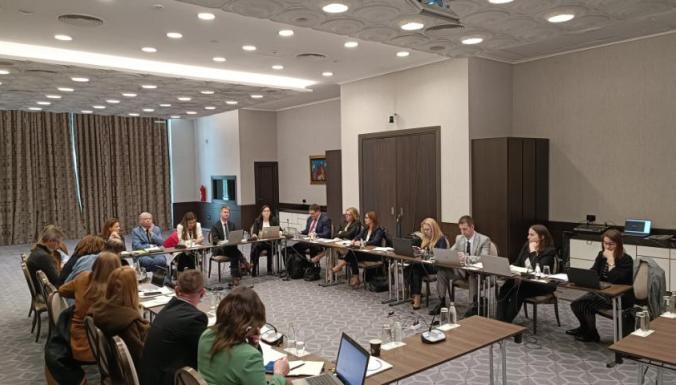PODGORICA, MARCH 31 (ONASA-MINA) – During the two-day negotiations on Additional Protocol 7 to the CEFTA agreement, which were held in Podgorica, progress was made in establishing a more efficient dispute resolution mechanism (DSM).
“Successful economic cooperation and increased trade between the signatory countries of the CEFTA agreement, and then their accession to the single EU market, require the existence of a reliable mechanism for resolving disputes,” the CEFTA press release states.
This mechanism implies a structured process aimed at resolving disputes that may arise between two or more parties involved in trade.
According to the director of the CEFTA Secretariat, Emir Đikić, in order to prevent a harmful impact on trade and overall relations between the CEFTA parties, trade barriers must be overcome and disputes resolved.
“Establishing a fast, transparent, adaptable and economical mechanism for resolving disputes is the goal of continuous negotiations. “Such a system must be governed by rules, independent, impartial and in the end must be able to guarantee protection and enforcement”, said Đikić.
It is expected that, as he added, the improved dispute resolution mechanism will significantly contribute to integration within CEFTA, through greater predictability.
David Hudson from the European Commission’s Directorate-General for Neighborhood and Enlargement Policy (DG NEAR) stated that an efficient dispute resolution mechanism gives companies and investors confidence when setting up business in new markets.
“This is why work within CEFTA on an improved dispute resolution mechanism is so important to strengthening trade in the Western Balkans. Progress has been made, so we hope to reach an agreement by the end of the year,” said Hudson.
Recognizing the importance of adopting an efficient mechanism for resolving disputes within CEFTA, the Acting General Director for International Trade and Economic Cooperation in the Ministry of Economic Development and Tourism, Jovana Krunić, pointed out that the finalization of negotiations on Additional Protocol 7 on dispute settlement is defined as one of the priorities during the CEFTA presidency this year.
She encouraged all CEFTA members to continue with a constructive approach to the negotiations with the aim of closing the remaining open issues and ending the negotiations during this year and during Montenegro’s presidency.
According to her, a functional dispute resolution mechanism can bring many benefits to the free trade agreement and its parties. It can help prevent and resolve trade disputes in a timely and efficient manner, thereby reducing uncertainty and increasing predictability for businesses and investors. It can also promote compliance with the rules and obligations of the agreement, which in turn encourages a level playing field for all parties.
Negotiations on CEFTA Additional Protocol 7 began in 2020, and are based on the World Trade Organization (WTO) system and the European Union model. The mechanism includes consultations or negotiations, mediation and arbitration to resolve disputes between the parties as quickly and simply as possible. Additional Protocol 7 contains, among general provisions on deadlines, costs and logistics, parts related to mediation procedures, consultations, rules on dispute resolution procedures, compliance procedures and compliance review, as well as the Code of Conduct for members of the arbitration panel.
Negotiations on Additional Protocol 7 were supported by the United Nations Conference on Trade and Development (UNCTAD) project Monitoring and reporting on non-tariff measures and supporting the implementation of the CEFTA dispute settlement mechanism, funded by the European Commission.
“The project provides legal assistance to the negotiators in order to adopt a modern and efficient mechanism through the agreement. Other related activities will be aimed at supporting the implementation of Action Plan 7 after its adoption and raising awareness among companies. It will also support efforts to monitor non-tariff measures and transparency of trade-related regulations,” said the UNCTAD representative.
The current rules for settling disputes are prescribed by the CEFTA agreement. The strengthening of economic cooperation led to an increase in trade flows and improved relations between the Parties, so the initial dispute resolution mechanism proved to be ineffective for the new reality and required serious reform due to its limited use.


